Part 1 of this Series can be seen here
A quick recap:
One example of a citizen science project here in the UK is the Big Butterfly Count which is run by the Butterfly Conservation. They are a wildlife charity whose main aim is to undertake research in the study of Butterflies and manage reserves to increase the numbers of Butterflies seen.
This Citizen Science initiative has been running in the UK for a few years now, and is popular among a lot of people interested in wildlife in this country. This years event has only been open for a week, and already 25,000 members of the public have already submitted overr 55,000 records between them. To see for yourself, check this map showing the records submitted so far.
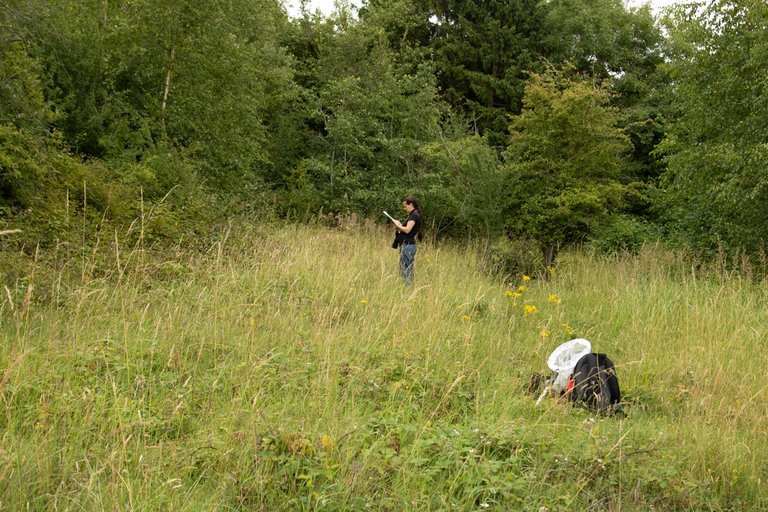
A quick recap of the rules because the data needs to be standardised which means following the same protocols each time so the records can be compared.
- Set the timer for 15 minutes. The idea is for a 'snapshot' of what butterflies are out now so we don't spend hours waiting for a Butterfly to turn up.
- Try to do the Count in bright weather, preferably sunny. And preferably not in the rain! 😉
- Only count the maximum number seen. for example, if you see 3 Peacock Butterflies at the same time then you can count that as '3'. If you see a single Peacock Butterfly on 3 separate occasions than that could potentially be the same individual, so you would count that as '1'.
- If you don't see anything, still record that information anyway. Recording that there were zero butterflies seen in good conditions is just as vital to research, and can help show where declines are happening.
- Records are submitted online. The Big Butterfly Count 2020 will run from Friday 17 July to Sunday 9 August, and you have till the end of August to submit any records.
And of course, only record the butterflies you are sure of. If a butterfly is too quick and you can't tell what it is, then you shouldn't submit it. For the data to be useful, it needs to be accurate.
So in Part 1 we did our first count, and saw a number of different butterflies.
Now we have moved to the other side of the reserve (approximately 1 mile away) to try the Count again. We chose another grass meadow to stand in, and we set the 15 minute timer going again...
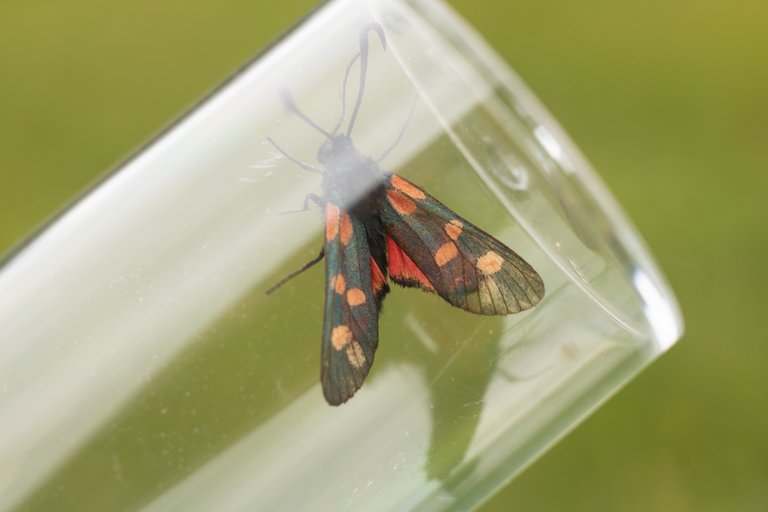
6-Spot Burnett Moth Zygaena filipendulae
First off the mark was this 6-spot Burrnet Moth. I spotted this one fluttering around and as he refused to settle, I resorted to using a net to catch him and take a closer look, and I was correct with 6-spot... There is a similar looking species with 5-spots, so its worth checking to make sure.

Peacock Butterfly - Aglais io
Then we spotted this Peacock Butterfly feeding on a species of Scabious These are very recognisable and one of our more common butterflies here in the UK
We were only 5 minutes into our 15 miute count, and already the results were looking very different. There were a lot less to see here, even though we were only a mile away from the first location. The weather conditions were the same. In fact it was a bit sunnier and warmer in this location, so probably better for the butterflies here.
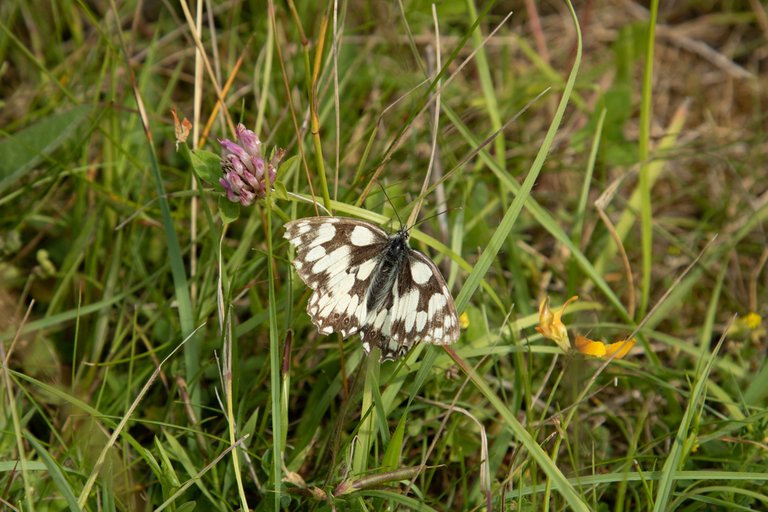
Marbled White Melanargia galathea
In fact, other than a Meadow Brown and another single Marbled White, that was it for our 2nd Count. It was slightly disappointing considering how good the habitat should have been.
No matter. We still recorded the results, and we will be uploading them to the Butterfly Conservation's website. Because as I mentioned in the previous post, it is important to be accurate with the data. and if that means only 4 butterflies in this case (or even zero in some cases) then so be it. And it is interesting to see how localised some species are, so that a distance of 1 mile can make a huge difference.
Anyway, Second count completed, we had a look round for anything else to see, and I spotted these two Longhorn Beetles
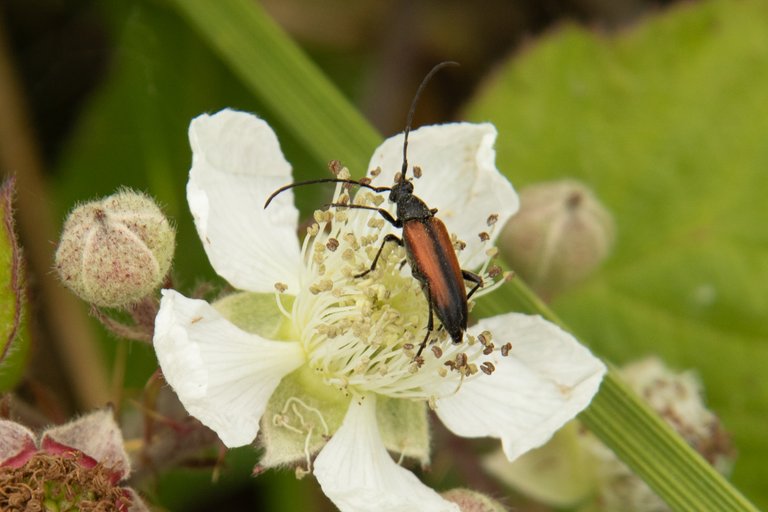
Black-striped longhorn beetle - Stenurella melanura
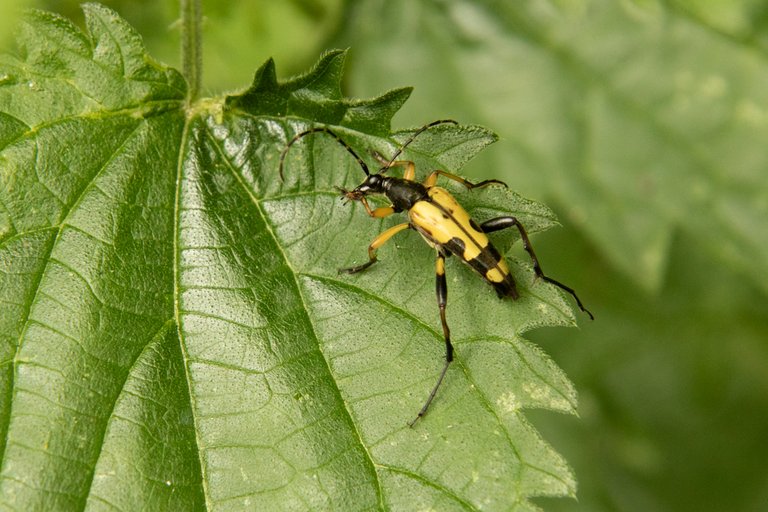
Black and Yellow Longhorn beetle - Rutpela maculata
And that concludes this 2-part series. I hope you found it interesting, or maybe you would like to try this yourself? The survey runs until the 9th of August (2020) and you can go to a park, or a nature reserve, you can do it from your back garden if you wanted! It all counts, and all of it will be useful data to contribute to the Survey.
My next post on Butterflies will again be recording sightings and collecting data, but on that occasion I will use a different approach... and of course I will be trying to get pretty pictures at the same time 😁 😉
Further Reading
Butterfly Conservation Mission Statement
https://butterfly-conservation.org/about-us
Big Butterfly Count official page
https://bigbutterflycount.butterfly-conservation.org/about
Hi @dannewton,
Thank you for participating in the #teamuk curated tag. We have upvoted your quality content.
For more information visit our discord https://discord.gg/8CVx2Am